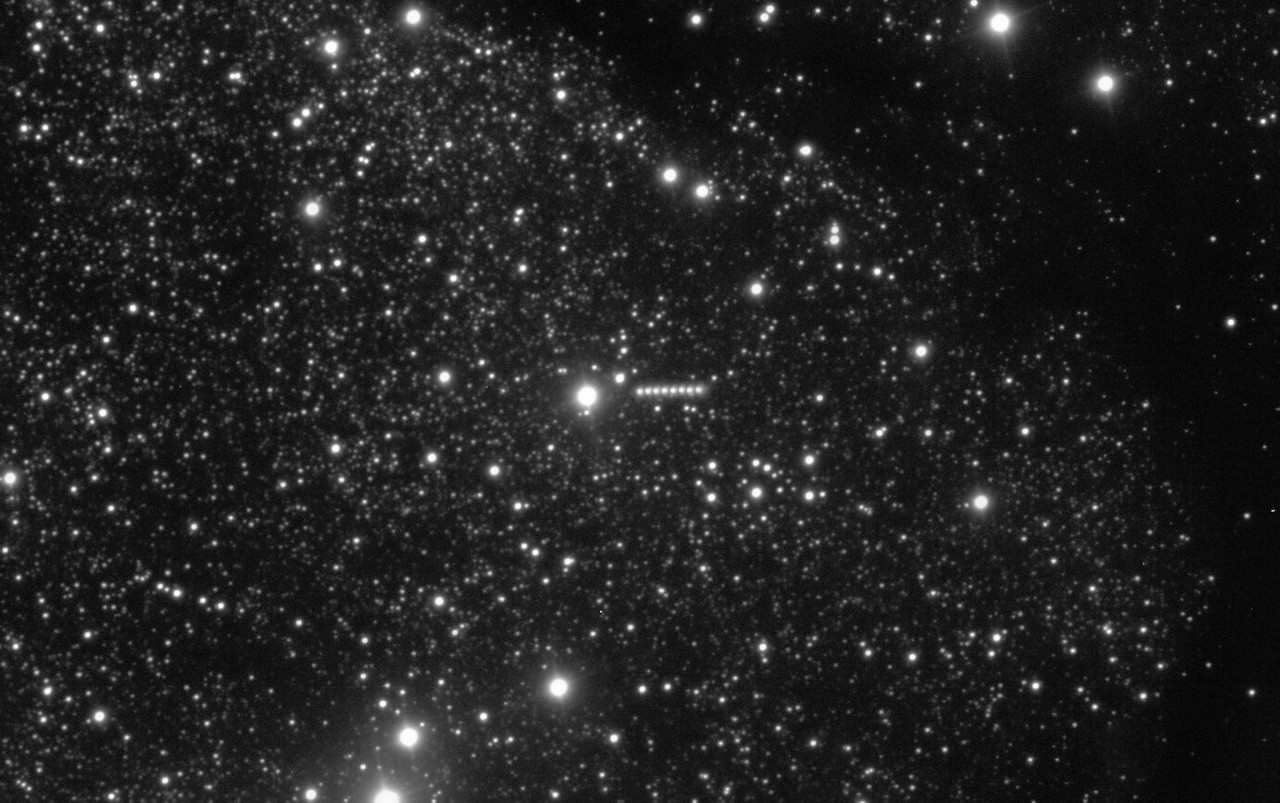Science
Harvard Physicist’s Alien Claims Challenged by New Research

When the interstellar object known as 3I/ATLAS passed through our Solar System, it sparked a heated debate within the scientific community. The renowned physicist Avi Loeb made headlines by suggesting there is a 40% chance that this object could be an alien spacecraft. This bold assertion has captivated the public imagination, but it has also drawn scrutiny from experts in the field.
In a recent analysis, Professor Jason T. Wright of Penn State University examined the evidence surrounding 3I/ATLAS. His findings indicate that the object, while intriguing, aligns more closely with the characteristics of a typical comet than an extraterrestrial craft. As it has approached the Sun, 3I/ATLAS has displayed classic cometary features, including a glowing tail and a dusty coma formed by sublimating ices.
The presence of jets of gas, a common behavior observed in comets, has also been noted. These jets can cause slight alterations in the object’s trajectory, as well as fluctuations in brightness. Wright points out that these characteristics suggest that 3I/ATLAS is best understood as a natural phenomenon rather than a spacecraft from another civilization.
Loeb’s claims of anomalies related to 3I/ATLAS have fueled speculation. He identified ten unique features, including a retrograde orbit—where the object moves in the opposite direction of the planets—and an unusual composition rich in nickel. He also linked the object to the famous Wow! signal detected in 1977, which some viewed as a potential sign of extraterrestrial life.
Yet, as other scientists have investigated these claims, many of these so-called anomalies have been attributed to natural explanations. For example, the strange acceleration observed in 3I/ATLAS can be accounted for by the outgassing jets, while the retrograde orbit is typical for objects ejected from their original star systems. The connection to the Wow! signal is largely regarded by experts as a coincidence rather than evidence of alien technology.
While the evidence may dispel the idea of 3I/ATLAS as an alien spacecraft, it does not diminish the object’s significance. The unusual nickel composition and low water levels reveal a rich history that speaks to the formation of a completely different solar system. This makes 3I/ATLAS a valuable scientific artifact, offering a glimpse into the building blocks of distant stellar nurseries.
In his analysis, Wright emphasizes a crucial scientific lesson: not every mystery requires an extraterrestrial explanation. The characteristics of 3I/ATLAS may reflect the wonders of our natural universe, showcasing the complexity and beauty of celestial phenomena.
The ongoing debate reflects a broader discussion within the scientific community regarding the pursuit of extraordinary claims versus the evidence pointing to natural explanations. While Loeb advocates for exploring the possibility of alien technology, Wright’s analysis provides a compelling argument for understanding 3I/ATLAS as a remarkable, yet natural, interstellar comet.
Ultimately, the story of 3I/ATLAS serves as a reminder that sometimes the most fascinating narratives arise from the wonders of nature itself.
-

 Health3 months ago
Health3 months agoNeurologist Warns Excessive Use of Supplements Can Harm Brain
-

 Health3 months ago
Health3 months agoFiona Phillips’ Husband Shares Heartfelt Update on Her Alzheimer’s Journey
-

 Science2 months ago
Science2 months agoBrian Cox Addresses Claims of Alien Probe in 3I/ATLAS Discovery
-

 Science1 month ago
Science1 month agoNASA Investigates Unusual Comet 3I/ATLAS; New Findings Emerge
-

 Science1 month ago
Science1 month agoScientists Examine 3I/ATLAS: Alien Artifact or Cosmic Oddity?
-

 Entertainment5 months ago
Entertainment5 months agoKerry Katona Discusses Future Baby Plans and Brian McFadden’s Wedding
-

 Science1 month ago
Science1 month agoNASA Investigates Speedy Object 3I/ATLAS, Sparking Speculation
-

 Entertainment4 months ago
Entertainment4 months agoEmmerdale Faces Tension as Dylan and April’s Lives Hang in the Balance
-

 World3 months ago
World3 months agoCole Palmer’s Cryptic Message to Kobbie Mainoo Following Loan Talks
-

 Science1 month ago
Science1 month agoNASA Scientists Explore Origins of 3I/ATLAS, a Fast-Moving Visitor
-

 Entertainment2 months ago
Entertainment2 months agoLewis Cope Addresses Accusations of Dance Training Advantage
-

 Entertainment3 months ago
Entertainment3 months agoMajor Cast Changes at Coronation Street: Exits and Returns in 2025









